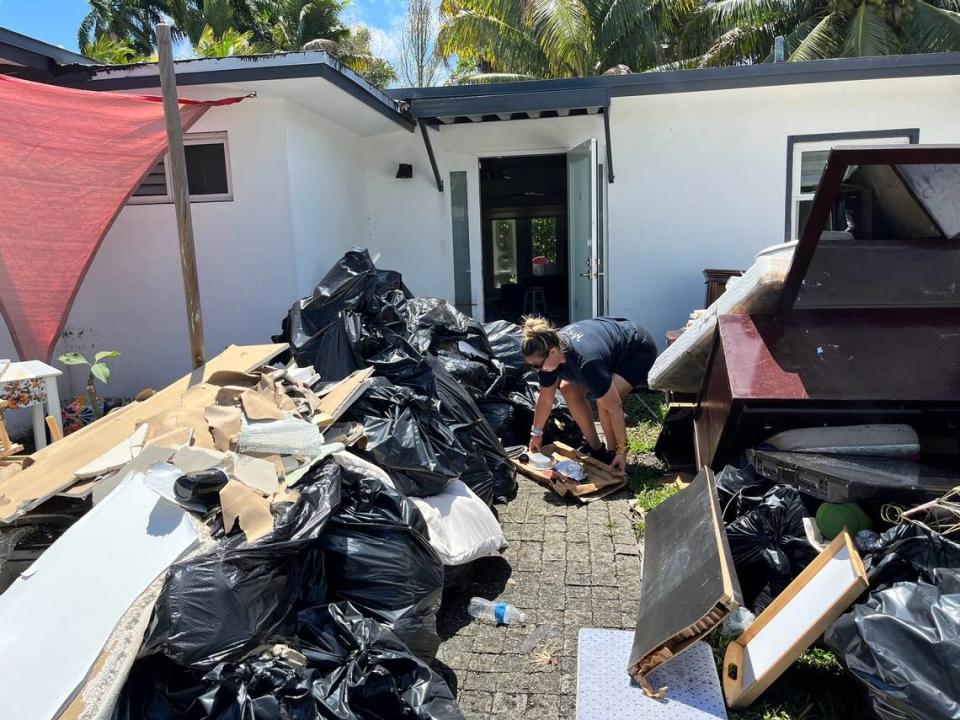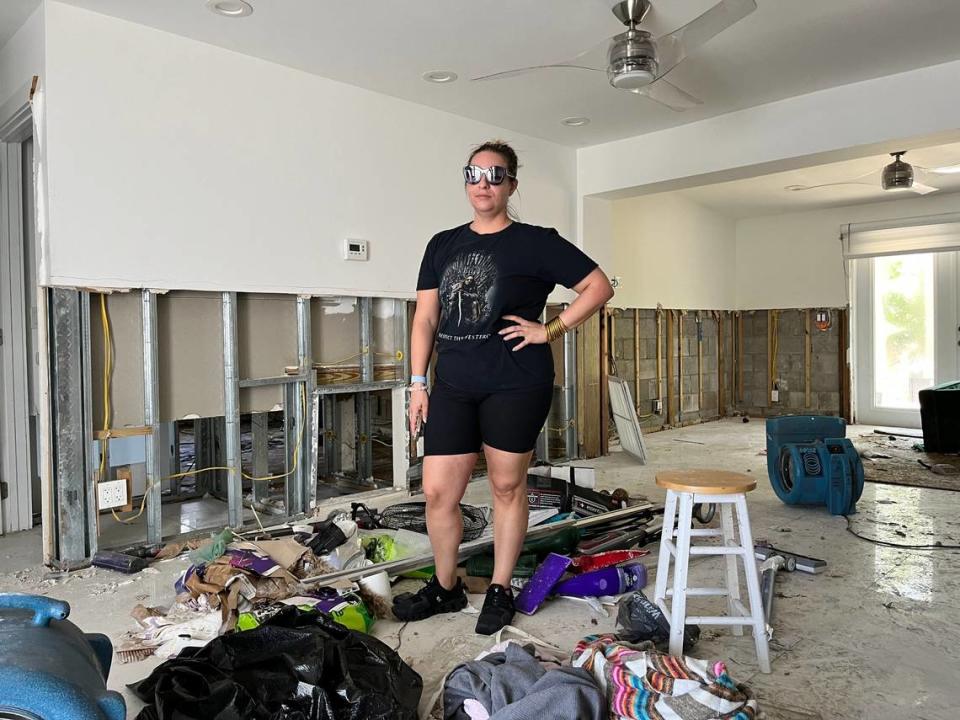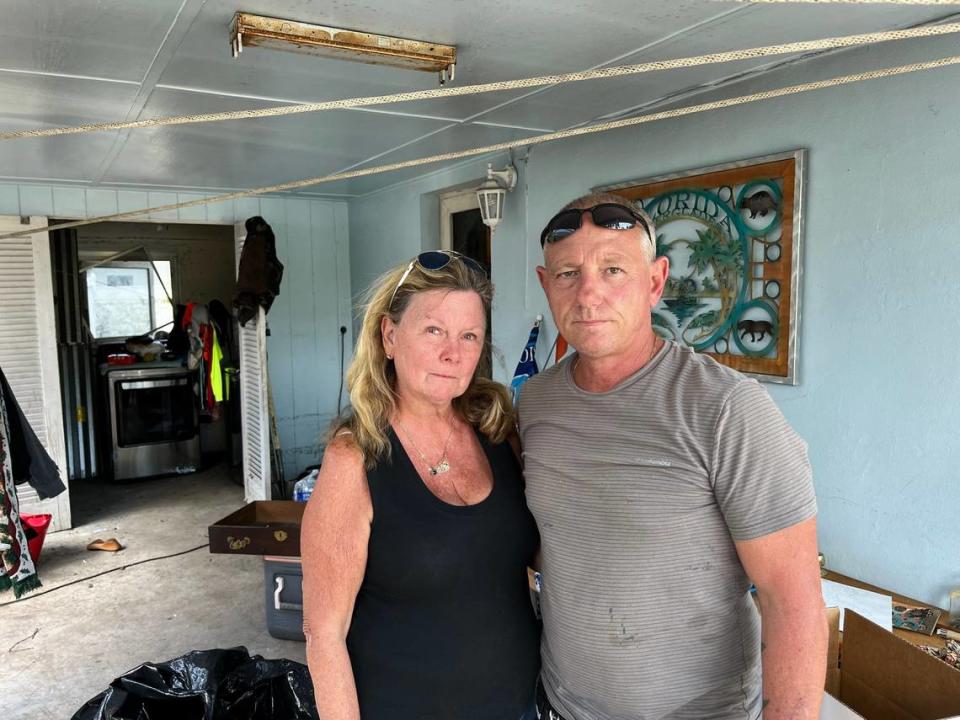Fort Lauderdale counts flooded homes in hopes of FEMA help. So far, nearly 1,000
The toll of Fort Lauderdale’s epic, unprecedented flood is starting to come into focus one week later, largely through a city-run map chronicling each waterlogged home. And there are many.
As of Tuesday evening, the city had registered more than 900 flooded buildings within city limits. Most of them saw severe flooding, defined at more than 18 inches. Another 200 saw minor damage, still enough to require ripped-out floors and drywall. And the surveys will take days more.
“These numbers are going to continue to go up as we have more crews assessing door by door,” City Manager Greg Chavarria said in a Tuesday afternoon city meeting.
This tally could make a difference in securing aid from the Federal Emergency Management Agency, which Mayor Dean Trantalis said initially wrote off the 1-in-1,000-year deluge as a “non-qualifying event,” meaning not serious or expensive enough. That would leave homeowners relying on private insurance companies or federal flood insurance — if they have them.
But the city pushed back, and with the help of state emergency managers and U.S. Sen. Rick Scott, managed to convince the agency to visit and review the damage in person.
READ MORE: Climate change could make freak events like Fort Lauderdale’s rain bomb more common
Trantalis said that if the city can prove enough homes saw at least a foot of flooding, FEMA will open the door for government reimbursement and even individual assistance for residents in need.
“It now appears as if, thanks to the results of the city manager, we’re going to see a positive response with financial reimbursement,“ he said at the meeting.
FEMA told the Herald that Florida’s Department of Emergency Management also requested FEMA review damage to homes and public buildings to potentially unlock some money, and those inspections begin Wednesday.
“These damage assessments are the first step in determining if federal assistance is needed,” FEMA said. “At this time, FEMA has not received a major disaster declaration request from the state of Florida for the flooding that occurred in Broward County, Florida.”
Soggy homes mark a long recovery
Residents say they could really use the help FEMA could offer.
In the River Oaks neighborhood — marked by a cluster of red and yellow flags on the city map — streets are lined with stacks of soggy mattresses, furniture and other belongings. Low spots are still under a few inches of water, despite days of sun.
Lance Peterman, 56, said he’s flooded plenty of times since his mother first bought the family home in 1972. But it’s gotten worse in the last ten years, with at least six major floods inside his home.
This time was one of the worst though, he said. He rushed home through the flooded streets to evacuate his 75-year-old mom. He found her inside, floating on a mattress in three feet of water.
He was able to rush her to safety, but recovery promises to be difficult. Like the majority of Broward County residents, he doesn’t have flood insurance. Only about 200,000 of the county’s 2 million residents have flood insurance. Far more have home insurance, like Peterman, but that doesn’t cover flooding damage.
The floods took three of his cars, and the dirty waterline was still visible on all of the open doors as Peterman tried to dry them out.
“The cup holders still have water in them,” he said. “We’ve been through it.”

But even flood insurance won’t be enough for some residents.
His neighbor, Renee Longini, rushed home from her shift as a nurse anesthetist at Miami’s Jackson Hospital to find several inches of water inside her home. After stuffing her two cats, Bori and Rufio, into a pet carrier and a bag, she tried to escape out a side door, but the pressure of fast-moving water — some of which was spilling into her home — held it shut. She was trapped inside with all of her furniture afloat in several feet of water.
“It felt like the Titanic,” she said.
Her frantic calls to 911 were met with a busy signal or a promise of future help, and she didn’t make it outside until late that night, when the rain finally stopped.
The grueling cleanup kept her at home all weekend. She missed being the maid of honor at her best friend’s wedding in Pittsburgh.
“It’s devastating. It’s overwhelming,” she said. “Everything I worked so hard for is...”
She trailed off, pointing at the three feet of drywall ripped out of every wall in the house and the mountain of black trash bags piled in her front yard, stuffed with all her ruined belongings.

She has flood insurance through the National Flood Insurance Program, the largest flood insurer in the nation, but it doesn’t cover any of her belongings. And it won’t cover her stay at a rental home for the four to six months it could take to repair her home.
That means Longini, who lives alone, will have to pay for her mortgage, taxes, insurance and utilities at her flooded home while also funding her new living space.
“I can’t maintain two households on my own,” she said.
‘This was a swamp’
Down the street, Anne McDougall tried to hold back tears as she described her own experience with the surging water invading her home. She and her daughter, grandson, cat and dog all huddled on the highest point of furniture in the home as the water kept coming.
McDougall, 64, also tried 911 for an evacuation but was told she was one on a long list. Fort Lauderdale said they rescued 900 people during the flood, including 600 that first night.

The waters have now receded, but scars remain. McDougall, looking at the water still ponding at the end of her driveway, couldn’t contain her emotion when she talked about her 9-year-old grandson’s reaction to the flooding.
“He told me he gets sick to his stomach every time he sees a puddle,” McDougall said. “How awful is that?”
On Tuesday she and a friend, Marvin Kitrell, were boxing up the last of her waterlogged things. She had private flood insurance, which will cover some of her things but not housing. FEMA aid would be welcome, she said.
Kitrell calls himself lucky. His home, about two miles away, only got three inches of flooding. He still had to rip up his brand-new wood floors, the ones he installed himself just two weeks earlier.
He worries about his friends, like McDougall and others in the hard-hit Edgewood neighborhood, who saw far worse damage and have few resources to get their lives back to normal.
“This was a swamp,” he said. “They just had people sitting there for days.”

